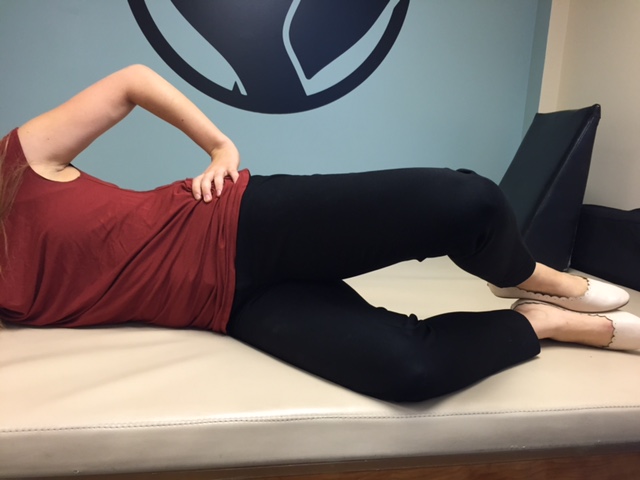Author: Larkin Grant, SPT
For those of you who happened to catch my very enthusiastic Zumba post from the other week, you may know that I absolutely love group exercise classes! I have tried to use my developing physical therapy brain to figure out what might be missing from these gym classes to try to help fellow group exercise enthusiasts avoid injury.
A typical case I see at physical therapy is a client who goes to gym classes all the time, is in great shape, but still happens to get injured. We do an evaluation on this patient and all the “big” muscles are very strong - they have great shoulders, quad strength, hamstring strength, so what possibly could be wrong? When we go to check small stabilizer muscles, however, these tend to be weak. This fits with my opinion that most group weightlifting and cardio classes seem to lack emphasis on the rotator muscles of the shoulder and hips.
Many of you may have heard of the rotator cuff of the shoulder. This involves a group of small muscles that help stabilize your shoulder as you do dynamic movements in the gym and in daily life. Your shoulder is a ball and socket joint, and the only thing holding it in place is the stability that comes from muscle attachments. It is important that the small stabilizer muscles are strong so your shoulder is in a good position for moving weights or reaching overhead. This can help prevent injuries such as shoulder impingement, bursitis and rotator cuff tears.
One thing that might be surprising is that the hip follows a very similar pattern. Your femur is seated in the pelvis through a similar ball and socket joint. It is also stabilized by a group of rotator muscles, including the gluteus medius. In fact, these muscles are so important that some people have started to call these muscles the “rotator cuff of the hip”. These deep rotators are very important muscles that can affect the position of your back, hips, knees, and ankles.
Many injuries of the back, hips, knees, and ankles have all found their roots in decreased strength in the gluteus medius. For one, it is one of the most important muscles to help prevent ACL tears. This is because when your gluteus medius is weak, it tends to make your knee turn in when you land from a jump or squat. This motion puts a lot of stress on your ACL, and makes it more likely to tear. Furthermore, for runners, some of the most common injuries are knee and foot pain due to poor stabilization of the hip.
Most of the motions we do in our daily lives are forward and backwards. For example, walking, running, and biking all tend to be forward motions and not involve side-to-side motion. Therefore, most people likely need strengthening of the rotators.
Here are a few exercises to get you started:
SHOULDER rotators
1. Internal and external rotation with band
If you can get your hands on a Theraband, tie one end in a knot and shut it in a door.
Roll a towel up and put it under your elbow. Don’t let this towel drop on the floor. This has been shown to increase muscle activation during the exercise.
Move your shoulder out to the side, keeping elbow in and wrist straight. Repeat until you start to feel a good muscle burn.
Switch around and move your shoulder in towards your stomach, keeping elbow and wrist straight. Repeat until you feel that same good muscle burn.
HIP rotators
1. Clamshells
This exercise is my single favorite PT exercise because I feel that most everyone can benefit from it!
Bend your knees so your hip makes a 45 degree angle. Roll your hips forward and block them with your arm. This is the most common mistake! Don’t let your hip roll back as you complete this exercise
Keeping your ankles together, rotate your top knee up towards the ceiling and return to start.
Complete until you get a good muscle fatigue.
2. Straight leg lifts
This is a harder than the clamshell exercise. Keep both legs straight and lift the top leg up to the ceiling and back slightly. Only lift as far as you can make it without your side crunching in. Repeat until you feel a good muscle burn
If you have any difficulty with these or any questions/concerns, contact your physical therapist today!
Interested in more exercise and health information? Like our Facebook page and join us on Twitter to access these information gems!





